
How wigs made Ranbir into Sanjay Dutt!
Rajkumar Hirani directorial, a Sanjay Dutt Biopic, Sanju has been roaring on the Box Office since the release of the
Behind-the-scenes pictures show painstaking preparations and exquisite clothes which turn a little girl into a living deity.
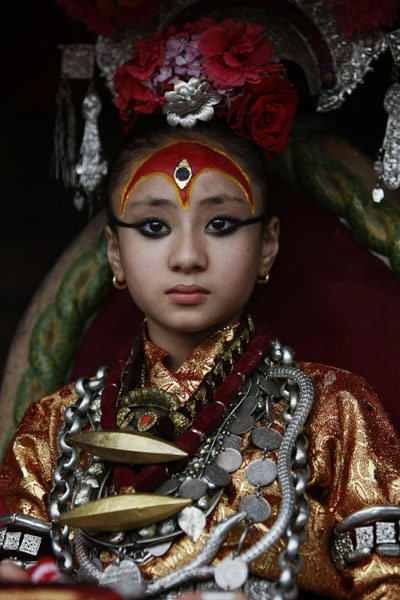
Nepal's living goddess locally known as Kumari, Samita Bajracharya, watches the last day of Rato Machhendranath chariot festival in Patan, outskirts of Katmandu, Nepal. Kumari, meaning virgin in Nepalese, are young pre-pubescent girls and are considered by devotees to be incarnations of a Hindu goddess. Selected as toddlers, living goddesses usually keep their positions until they reach puberty. (AP)
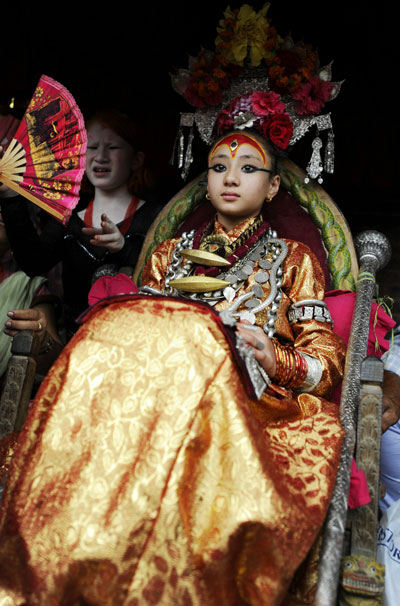
The Kumari, considered a living goddess, attends festivities on the last day of the Rato Machindranath chariot festival, also known as Bhoto Jatra, in Jwalakhel, on the outskirts of Kathmandu. The event, celebrated every year to herald good monsoon rains for increased rice harvest, prosperity and goodluck, is one of the main festivals observed by both the Buddhist and Hindu communities of Kathmandu. (AFP)
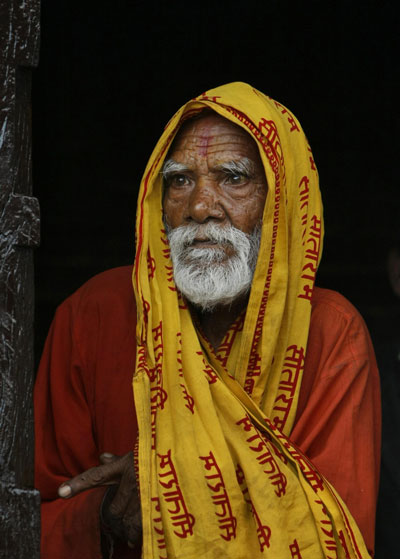
A Nepalese elderly holy man watches the last day of Rato Machhendranath chariot festival in Patan, outskirts of Katmandu, Nepal. Kumari, meaning virgin in Nepalese, are young pre-pubescent girls and are considered by devotees to be incarnations of a Hindu goddess. Selected as toddlers, living goddesses usually keep their positions until they reach puberty. (AP)
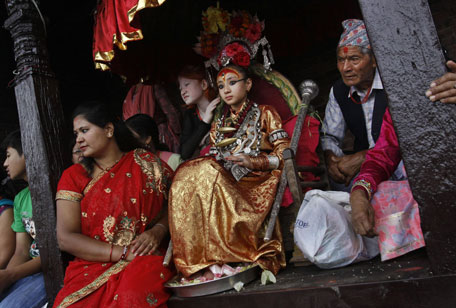 Nepal's living goddess locally known as Kumari, Samita Bajracharya, center, watches the last day of Rato Machhendranath chariot festival in Patan, outskirts of Katmandu, Nepal. Kumari, meaning virgin in Nepalese, are young pre-pubescent girls and are considered by devotees to be incarnations of a Hindu goddess. Selected as toddlers, living goddesses usually keep their positions until they reach puberty. (AP)
Nepal's living goddess locally known as Kumari, Samita Bajracharya, center, watches the last day of Rato Machhendranath chariot festival in Patan, outskirts of Katmandu, Nepal. Kumari, meaning virgin in Nepalese, are young pre-pubescent girls and are considered by devotees to be incarnations of a Hindu goddess. Selected as toddlers, living goddesses usually keep their positions until they reach puberty. (AP)
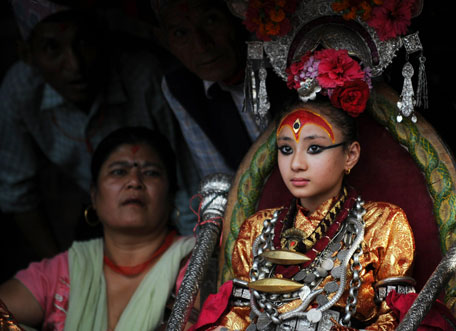 The Kumari, considered a living goddess, attends festivities on the last day of the Rato Machindranath chariot festival, also known as Bhoto Jatra, in Jwalakhel on the outskirts of Kathmandu. The event, celebrated every year to herald good monsoon rains for increased rice harvest, prosperity and goodluck, is one of the main festivals observed by both the Buddhist and Hindu communities of Kathmandu. (AFP)
The Kumari, considered a living goddess, attends festivities on the last day of the Rato Machindranath chariot festival, also known as Bhoto Jatra, in Jwalakhel on the outskirts of Kathmandu. The event, celebrated every year to herald good monsoon rains for increased rice harvest, prosperity and goodluck, is one of the main festivals observed by both the Buddhist and Hindu communities of Kathmandu. (AFP)
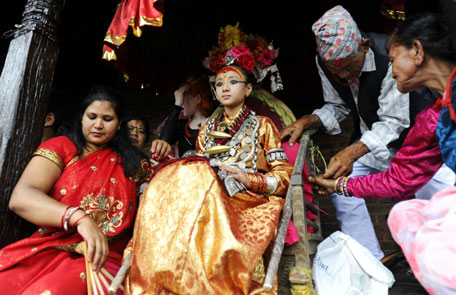 The Kumari, considered a living goddess, attends festivities on the last day of the Rato Machindranath chariot festival, also known as Bhoto Jatra, in Jwalakhel, on the outskirts of Kathmandu. The event, celebrated every year to herald good monsoon rains for increased rice harvest, prosperity and goodluck, is one of the main festivals observed by both the Buddhist and Hindu communities of Kathmandu. (AFP)
The Kumari, considered a living goddess, attends festivities on the last day of the Rato Machindranath chariot festival, also known as Bhoto Jatra, in Jwalakhel, on the outskirts of Kathmandu. The event, celebrated every year to herald good monsoon rains for increased rice harvest, prosperity and goodluck, is one of the main festivals observed by both the Buddhist and Hindu communities of Kathmandu. (AFP)
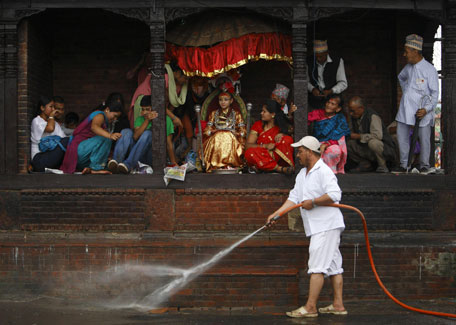 A worker cleans the area in front of where Living Goddess Kumari (C) sits wearing her traditional attire as she waits to observe the Bhotojatra festival in Lalitpur. Red Machindranath, regarded as the god of rain, is worshipped during the festival by farmers who pray for rain and an abundant harvest before the monsoon season in Nepal. (REUTERS)
A worker cleans the area in front of where Living Goddess Kumari (C) sits wearing her traditional attire as she waits to observe the Bhotojatra festival in Lalitpur. Red Machindranath, regarded as the god of rain, is worshipped during the festival by farmers who pray for rain and an abundant harvest before the monsoon season in Nepal. (REUTERS)
 Living Goddess Kumari (C), adorned in her traditional attire, arrives to observe the Bhotojatra festival in Lalitpur. Red Machindranath, regarded as the god of rain, is worshipped during the festival by farmers who pray for rain and an abundant harvest before the monsoon season in Nepal. (REUTERS)
Living Goddess Kumari (C), adorned in her traditional attire, arrives to observe the Bhotojatra festival in Lalitpur. Red Machindranath, regarded as the god of rain, is worshipped during the festival by farmers who pray for rain and an abundant harvest before the monsoon season in Nepal. (REUTERS)
![]() Follow Emirates 24|7 on Google News.
Follow Emirates 24|7 on Google News.